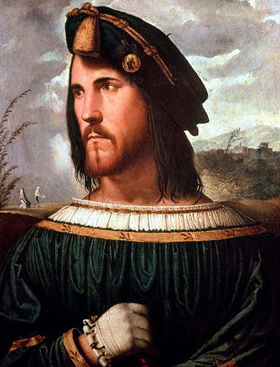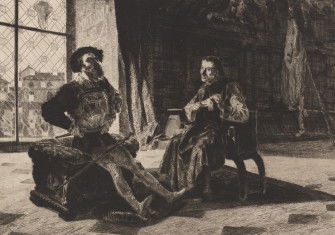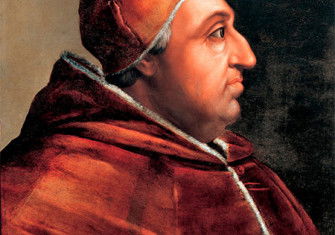Death of Cesare Borgia
The Renaissance political figure died on 12 March 1507.

The Borgias came from Spain originally and the most famous of them died there, killed at the age of 31 in a minor skirmish by attackers who did not even know who he was. Christened Cesare, which would give him the welcome opportunity to take Aut Caesar aut nihil (‘Either Caesar or nothing’) as his motto, he was one of the illegitimate sons of Pope Alexander VI by Vanozza Catanei. He was trained for the Church and made Archbishop of Valencia and a cardinal when still in his teens, but he was no godly pastor but a formidable man of action.
Brave, daring and determined, he was insatiably power-hungry and entirely ruthless. Murder, bribery and deceit were all in the day’s work to him and his pleasures were women, hunting and fashionable clothes. He was considered the handsomest man in Italy, there were inevitably rumours of incest with his sister Lucrezia and he had syphilis from his early twenties.
His father put Cesare in command of the papal army in 1496, when he was still only about twenty. In alliance with the French the two of them set out to bring the central Italian cities back under direct papal control and carve out an Italian kingdom for Cesare himself. Machiavelli, who greatly admired Cesare, believed that he would have succeeded if it had not been for Pope Alexander’s death in Rome of malaria in 1503 and the fact that Cesare himself came down with the disease as well and was temporarily put out of action. The doctors sank him in a huge jar of iced water as a cure and he somehow survived the shock, but the cardinals chose as the new pope a dedicated enemy of the Borgias, Giuliano della Rovere, who succeeded as Julius II.
When Italy was at last united in the nineteenth century, Cesare could be hailed as a forerunner of Italian unity, though his motives were entirely self-interested. He was now arrested and packed off to prison in Spain. He managed to escape and took service with his brother-in-law, King John of Navarre. He planned to return to Italy before long, but meanwhile there was a rebellion against King John to contend with and Cesare took command of a 5,000-strong Basque army to deal with the rebels.
One of the rebels was Luis de Beaumonte, lord of the castle of Viana. King John and Cesare set siege to the castle early in March. Commanded by de Beaumonte’s son, it seemed an easy target, weakly garrisoned and inadequately provisioned. However, on the night of the 11th, a Wednesday, de Beaumonte was able to get a convoy of mules carrying provisions into the castle under cover of a sudden torrential storm. Cesare, alerted, led seventy horsemen out to attack de Beaumonte and his escort, who were now riding away from the castle. In his eagerness he far outdistanced his men and the enemy spotted him and ambushed him in a ravine. Hopelessly outnumbered, he was dragged off his horse and overwhelmed. His killers stripped his armour off and left his naked, bloodstained body with the marks of at least twenty-five wounds showing he had sold his life dearly.
The attackers did not realize who Cesare was and de Beaumonte, when he discovered, was furious at the loss of an exceptionally valuable potential captive for ransom. Cesare’s men found the body and King John had it buried in the little parish church of Viana. The inscription on the marble tomb said: ‘Here in a scant piece of earth lies he whom all the world feared.’






